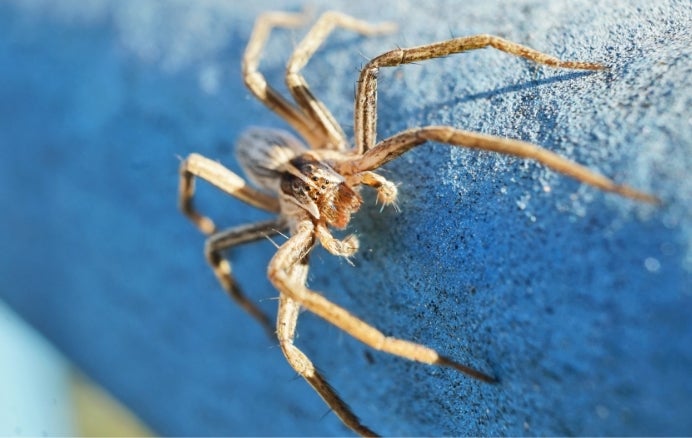
What You Need To Know About Pests In Clayton Lake, ME
Our area of Maine is home to many flying, crawling, jumping, running, and hitchhiking pests that regularly find their way into our houses. If you are tired of seeing unwanted insects, arachnids, and rodents in your home, Allagash Pest Solutions can help. Use our Pest Library to learn about pests in our area and how to effectively stop them from taking over your home or business.
Ants

These are the largest ants that get into our homes. Workers range in size from ¼ to ½ an inch in length and are black or a mixture of dark red and black. You should have no trouble identifying these ants because their size gives them away, every time.
In nature, carpenter ants tunnel in logs, dead trees, and other decaying wood to establish their nests. When they come into a yard, they will search for soft targets first, such as an untreated deck or an old fence. If they get into your home, they will attack softwood first but are capable of moving to the hard, sound wood of a home.
Prevention tips: Keep leaves raked away from your foundation walls. Make sure your mulch is less than 3 inches deep. Keep shrubs, tree limbs, and vegetation trimmed back away from your home. Address any leaky spigots or hoses to reduce moisture. Inspect your gutters to make sure rainwater is being channeled away from your home and not soaking your outside walls and perimeter soil. Refrain from stacking wood near your home. Reduce insects in your yard to reduce one of the food sources that attract carpenter ants. For professional assistance with carpenter ants and other insects, go here.
Cockroaches

At an impressive 1 ⅜ to 2 ⅛ inches in length, these are the largest cockroaches that get into our homes. They are chestnut brown with a darker head and a tan-colored back that has two dark chestnut dots, giving the appearance of a figure 8 when viewed at the right angle.
American cockroaches require a lot of moisture and will hang out in moist shaded areas around a home. But they don't have to live on your property to invade your property. These insects can travel farther than 300 feet in search of food and living spaces. When they explore exterior walls and find entry points, they can create many issues inside a home. Roaches are linked to the spread of 33 kinds of bacteria, including salmonella and E. coli. They are also known carriers of at least six parasitic worms.
The control of American cockroaches begins with a control of moisture around your foundation perimeter. Address leaks and moisture conditions both inside and outside your home to resist cockroaches. Trim tree branches to allow sunlight into shaded areas that stay moist around your home. Keep leaves, sticks, and other organic debris raked up. It is also important to control food sources that can attract cockroaches. Keep trash in sealed receptacles and clean your receptacles routinely. Keep compost away from your outside walls. And refrain from putting pet food outside. For professional assistance with American cockroaches, go here.
Fleas & Ticks

These ectoparasites are roughly 1/12 to ⅙ inches in length, depending on what stage of development they are in. Larvae look like tiny specks leaping around on the floor. If you find a flea in your pet's fur, it will look like a dark sunflower seed as it disappears from view within your pet's fur.
Pet owners have the most problems with fleas, but fleas can also come into a home on mice, rats, and other wild animals. Once inside, fleas can be a nightmare to deal with. A single female flea can produce 400 to 500 offspring in its 100-day lifespan. If those offspring find a blood meal in your home, it won't take long for this problem to get out of hand. It is vital to understand that fleas are not just a frustrating pest. They are able to transmit pathogens to humans, cats, and dogs, and their saliva can cause serious flea allergy dermatitis for pets. They are also linked to the spread of tapeworm.
It is possible to arrest a flea infestation by shampooing or steam cleaning rugs, washing bedding on the hottest temperature, and applying veterinarian-prescribed flea products to your pets. Follow up with frequent grooming with a flea comb and consider placing flea traps on the floor to monitor flea activity within your home. Keep in mind that a rodent infestation must be addressed to prevent continued infestation. For professional assistance with a flea infestation, go here.
Rodents

These rodents are large, usually gray, and are about 6 inches long with a thick tail that is also around 6 inches long. Like all rats, they have rounded faces, small ears, and a light-colored underside.
When Norway rats come into a yard, they will usually burrow in the ground underneath piles, especially in locations that are near a food source, but they may not be content to stay in the yard. They are equipped with teeth capable of chewing holes in wood and other building materials. Once inside a home, they can cause many issues. They leave droppings and urine everywhere. They chew holes, destroy insulation, and have the potential to cut live wires. They spread ticks, fleas, lice, mites, and other parasites. And their attraction to trash cans and other dirty locations make them a mechanical vector for harmful bacteria.
Norway rats can be difficult to get rid of because they are neophobic. That is to say, they don't like things that are new and unfamiliar. So, don't expect to lay food down for these pests and easily trap them. But you can use this fear against them. Keep your grass trimmed. Change and trim landscaping routinely. Move objects around in your yard, or remove them altogether. Norway rats love clutter. A clutter-free yard is less welcoming to these pests. For professional assistance with rats and other rodents, go here.
Stinging Insects

Yellow jackets are between ⅜ and ⅝ inches long with a jet-black and bright yellow coloration. They are not the only wasp with this coloration. Look at their waist to tell them apart from other wasps. Yellow jackets appear much fatter when placed next to other wasps.
When yellow jackets enter a yard, they can create ground or aerial nests. If they establish a nest in the ground, it can become a serious hazard for anyone who mows the grass on your property. The vibration from a lawnmower can alarm these wasps and cause them to swarm. Yellow jackets have a fierce nest-protection instinct.
Routine inspections and nest removal are key to yellow jacket sting prevention. This should be done by a licensed professional with the experience and equipment to do the job properly. A yellow jacket colony can have as many as 4,000 individuals, and wasps are able to sting multiple times without losing their stinger. For professional assistance with yellow jackets and other wasps, go here.
Termites

When termites come to feed on your home, you're not likely to see them. Worker termites (the ones that eat wood) rarely expose themselves. The type of termite that is most often seen is the caste of termite known as a swarmer. Swarmers are around ⅜ of an inch long with dark brown (almost black) bodies and long white wings, which are rounded at the tips. These winged reproductives are produced by a colony once it has matured and is ready to replicate.
In nature, termites are beneficial insects. They break down decaying wood and help to fertilize the soil. When they get into a home, they are destructive pests that can damage the support structure of a home from the inside out. This kind of damage can be extremely difficult to repair.
The only way to effectively protect a home from these destructive pests is to apply a bait or chemical barrier around the foundation perimeter. This should be installed and maintained by a licensed professional to ensure proper application. There are, however, some preventative steps homeowners can take to reduce the chance of infestation. Remove any conditions that allow the wood of your home to touch the soil. Keep your foundation perimeter free of leaves, stacked wood, and organic debris. Reduce moisture around your home. Keep crawl spaces free of wood debris. For professional assistance with termites, go here.
Customer Reviews
Schedule Your Inspection
Complete the form below to schedule your no obligation inspection






